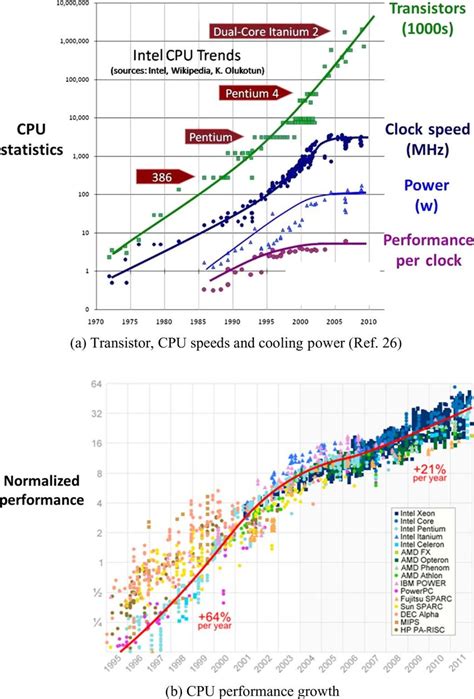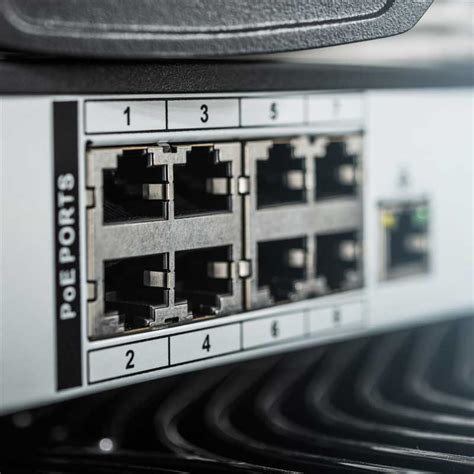When it comes to technological advancements, the world of tablets has witnessed remarkable growth, offering consumers an array of options to choose from. In this increasingly digital era, two prominent devices have risen to prominence: the iPad Air and the iPad Pro.
While these devices may seem similar at a glance, a closer inspection reveals a myriad of distinctions that set them apart. Each device boasts its own unique features and functionalities, catering to different user preferences and requirements. From design to performance, the iPad Air and iPad Pro offer unrivaled experiences in their own right.
One of the key differentiating factors is the processing power. The iPad Air, equipped with its powerful A14 Bionic chip, delivers seamless performance for everyday tasks and multimedia consumption. In contrast, the iPad Pro takes it up a notch with the latest M1 chip, which propels the device to new heights, enhancing productivity and enabling smooth multitasking for even the most demanding users.
Moreover, the display technology on these devices diverges significantly. The iPad Air exhibits a stunning Liquid Retina display that captivates users with its vibrant colors and sharp detail. On the other hand, the iPad Pro raises the bar with its ProMotion technology and a breathtaking Liquid Retina XDR display, guaranteeing an unmatched visual experience, particularly for artists, photographers, and creatives.
Design and Dimensions

The design and dimensions of the iPad Air and iPad Pro distinguish them from each other, highlighting their unique characteristics and features. Both tablets showcase sleek and modern designs that are visually appealing and ergonomic, making them comfortable to hold and use for extended periods of time.
- Form Factor: The iPad Air and iPad Pro come in different sizes, catering to the diverse needs and preferences of users. The form factor of the tablets determines their overall dimensions, weight, and portability.
- Display: The display of each tablet varies in terms of size and technology. The screen size affects the overall dimensions of the device, with larger displays offering a more immersive viewing experience. Additionally, the iPad Pro utilizes advanced display technologies, such as ProMotion and True Tone, which enhance image quality and color accuracy.
- Build Materials: The choice of build materials contributes to the overall design and durability of the tablets. Premium materials like aluminum and glass are often used, ensuring a solid and premium feel. However, the iPad Pro also incorporates a flat-edge design, reminiscent of the iPhone 12, which adds a touch of modernity.
- Connectivity and Ports: The availability of ports and connectivity options differ between the iPad Air and iPad Pro. The iPad Air features a traditional Lightning port for charging and connecting accessories, while the iPad Pro offers the convenience of a USB-C port, allowing for faster data transfer and compatibility with a wider range of peripherals.
- Color Options: Both tablets provide a range of color options to suit individual preferences. These color options add a personal touch and allow users to customize their device to reflect their style.
The design and dimensions of the iPad Air and iPad Pro play a significant role in defining their individuality, catering to the needs and preferences of users in different ways. From the choice of materials to the availability of ports, each tablet offers unique design elements that contribute to their overall appeal and functionality.
Display Technology and Size
When comparing the display technology and size of the iPad Air and iPad Pro, certain distinctions become evident. The two devices offer unique visual experiences, each tailored to meet specific user preferences and demands.
The iPad Air and iPad Pro utilize different display technologies, resulting in varying picture quality and performance. The display technology used in the iPad Air showcases vibrant colors and sharp details, creating a visually pleasing viewing experience. On the other hand, the iPad Pro employs advanced display technology that goes beyond conventional standards, providing enhanced color accuracy, brightness, and contrast. This allows for more precise and immersive visual content consumption.
- Size: The iPad Air features a compact and lightweight design, making it highly portable and suitable for on-the-go use. Its smaller form factor allows for easier handling and effortless integration into various aspects of daily life.
- Size: In contrast, the iPad Pro boasts a larger size, which allows for a more expansive display and a heightened level of interaction. The size of the iPad Pro enables users to engage effortlessly with creative tasks, such as graphic design or photo editing, providing a more spacious canvas for artistic expression.
These distinctions in size and display technology cater to different user preferences and intended use cases. While the iPad Air offers a compact and portable option for everyday tasks, the iPad Pro excels in delivering a superior visual experience, especially for professionals and creative individuals.
In conclusion, understanding the differences in display technology and size between the iPad Air and iPad Pro is essential in determining which device aligns best with one's specific needs and preferences. Whether it be a device optimized for portability or a device that offers unparalleled visual immersion, both the iPad Air and iPad Pro have unique features that cater to various user requirements.
Processing Power and Performance

When it comes to the inner workings of these Apple devices, there are notable distinctions that set them apart. The processing power and performance of the iPad Air and iPad Pro models exhibit varying levels of capability.
- 1. Processor:
- 2. Graphics Performance:
- 3. RAM Capacity:
- 4. Storage Options:
The iPad Air is equipped with a powerful processor that enhances its overall performance, ensuring smooth multitasking and seamless user experience. On the other hand, the iPad Pro takes things up a notch with its advanced processor, providing even more speed and power to handle demanding tasks effortlessly.
Both the iPad Air and iPad Pro offer excellent graphic performance, but the Pro model surpasses the Air in this aspect. With its powerful graphics card, the iPad Pro is capable of delivering stunning visuals and handling graphics-intensive applications with ease.
RAM plays a crucial role in determining the overall performance and responsiveness of a device. The iPad Air typically comes with a standard amount of RAM that ensures smooth operation and efficient multitasking. On the other hand, the iPad Pro offers a higher RAM capacity, allowing for more simultaneous tasks and accommodating resource-intensive applications.
Both the iPad Air and iPad Pro models offer a range of storage options to suit different user needs. However, the Pro model often provides higher maximum storage capacities, allowing users to store more files, apps, and media content on their devices.
In conclusion, while the iPad Air and iPad Pro share some similarities in processing power and performance, the Pro model generally offers a higher level of capability. Its advanced processor, superior graphics performance, higher RAM capacity, and expanded storage options make it the ideal choice for users who require top-notch performance and power. The iPad Air, on the other hand, provides a solid level of performance for everyday tasks and general usage.
Camera Capabilities
In the realm of photographic functionality, the iPad Air and iPad Pro set themselves apart with their distinctive camera capabilities. Each device offers a unique set of features to cater to different preferences and needs of photographers and videographers.
- Photography quality: Both the iPad Air and iPad Pro deliver impressive camera quality, capturing images with exceptional detail and vibrant colors.
- Optical zoom: The iPad Air and iPad Pro boast powerful optical zoom capabilities, allowing users to capture subjects from afar with clarity and precision.
- Low-light performance: When it comes to shooting in low-light conditions, the iPad Pro shines with its advanced sensor technology, enabling users to capture clear and sharp images even in dimly lit environments.
- Video recording: The iPad Air and iPad Pro excel in the realm of video recording. Users can film in stunning 4K resolution, elevating the quality of their footage to a professional level.
- Advanced editing tools: Both devices offer a plethora of editing tools and filters to enhance and customize photos and videos according to individual preferences.
Overall, while both the iPad Air and iPad Pro provide impressive camera capabilities, the Pro version offers additional features and advancements that cater to the needs of professional photographers and videographers. The camera capabilities of these devices are designed to empower users to capture moments with precision and artistry, ensuring that memories and creative endeavors are immortalized in the best possible way.
Connectivity and Accessories

When it comes to connectivity and expanding functionality, the iPad Air and iPad Pro offer a range of options and accessories that enhance the overall user experience. These devices are equipped with various connectivity features and support a wide array of accessories to cater to different needs.
Both the iPad Air and iPad Pro support wireless connectivity, allowing users to stay connected and access the internet on the go. They are equipped with Wi-Fi and Bluetooth capabilities, ensuring seamless wireless connections with other devices and networks.
Additionally, users have the option to choose cellular models of both the iPad Air and iPad Pro, enabling them to access the internet through mobile data networks. This provides flexibility and convenience, especially for those who frequently travel or require internet access in areas with limited Wi-Fi coverage.
To enhance productivity and creativity, both devices also offer support for a variety of accessories. These include versatile keyboard options that transform the iPad into a portable workstation, allowing users to type comfortably and efficiently. They also support Apple Pencil, a powerful tool for artists, designers, and anyone who wants to unleash their creativity on the iPad's high-resolution display.
Furthermore, users can expand the storage capacity of their iPads by utilizing external storage devices such as USB flash drives and external hard drives. This enables them to store and access large files, documents, and media content conveniently.
Overall, the iPad Air and iPad Pro offer a range of connectivity options and accessories that cater to different needs and enhance the overall user experience. Whether it's staying connected, increasing productivity, or unleashing creativity, these devices provide the tools and flexibility to meet various requirements.
Price and Value for Money
When it comes to the financial aspect of purchasing a tablet, comparing the price and determining the value for money is undoubtedly crucial.
Let's delve into the cost considerations when deciding between the iPad Air and the iPad Pro, without directly mentioning specific differences between them.
One of the primary factors to evaluate is the price tag of each device. Both the iPad Air and the iPad Pro offer their own unique features and specifications, which can influence their respective price points.
However, it is important to note that a higher price does not always guarantee better value for money. The value of a tablet depends on individual preferences and specific needs.
Considering factors such as performance, display quality, storage capacity, and overall user experience, users must determine which features are essential for their usage. It is essential to strike a balance between the price and the value derived from the device.
It is worth noting that the higher-end iPad Pro models often come with more advanced features tailored towards professionals and creative individuals, which may justify their higher price range. On the other hand, the iPad Air provides an excellent balance between performance and affordability for everyday users.
Ultimately, the decision on which tablet offers better value for money depends on the individual's specific requirements, budget, and personal preferences.
[MOVIES] [/MOVIES] [/MOVIES_ENABLED]FAQ
What are the main differences between iPad Air and iPad Pro?
iPad Air and iPad Pro differ in terms of display size, processor, and features. The iPad Air has a 10.9-inch Liquid Retina display, while the iPad Pro comes in two sizes: 11-inch and 12.9-inch Liquid Retina XDR display. The iPad Pro also utilizes Apple's M1 chip, which offers better performance and graphics compared to the A14 Bionic chip used in the iPad Air. Additionally, the iPad Pro includes a larger storage capacity option, a LiDAR scanner, and Face ID, which are not available on the iPad Air.
How does the performance of the iPad Air compare to the iPad Pro?
The iPad Air offers a powerful performance with its A14 Bionic chip, which provides great speed and graphics for various tasks like gaming, photo editing, and multitasking. However, the iPad Pro surpasses this with its M1 chip, which delivers even faster performance and enhanced graphics capabilities. The M1 chip in the iPad Pro is similar to the one used in Apple's Mac computers, making it a powerhouse for demanding applications and professional use.
What are the advantages of choosing the iPad Pro over the iPad Air?
Opting for the iPad Pro offers several advantages over the iPad Air. Firstly, the iPad Pro features a more advanced display technology called Liquid Retina XDR, which provides higher brightness and better contrast. The iPad Pro also includes additional features like a LiDAR scanner, which enables improved augmented reality experiences and precise depth sensing. Moreover, the iPad Pro offers larger storage capacity options, reaching up to 2TB, compared to the maximum of 256GB on the iPad Air. These advantages make the iPad Pro a better choice for professionals and users who require top-of-the-line performance and advanced features.




